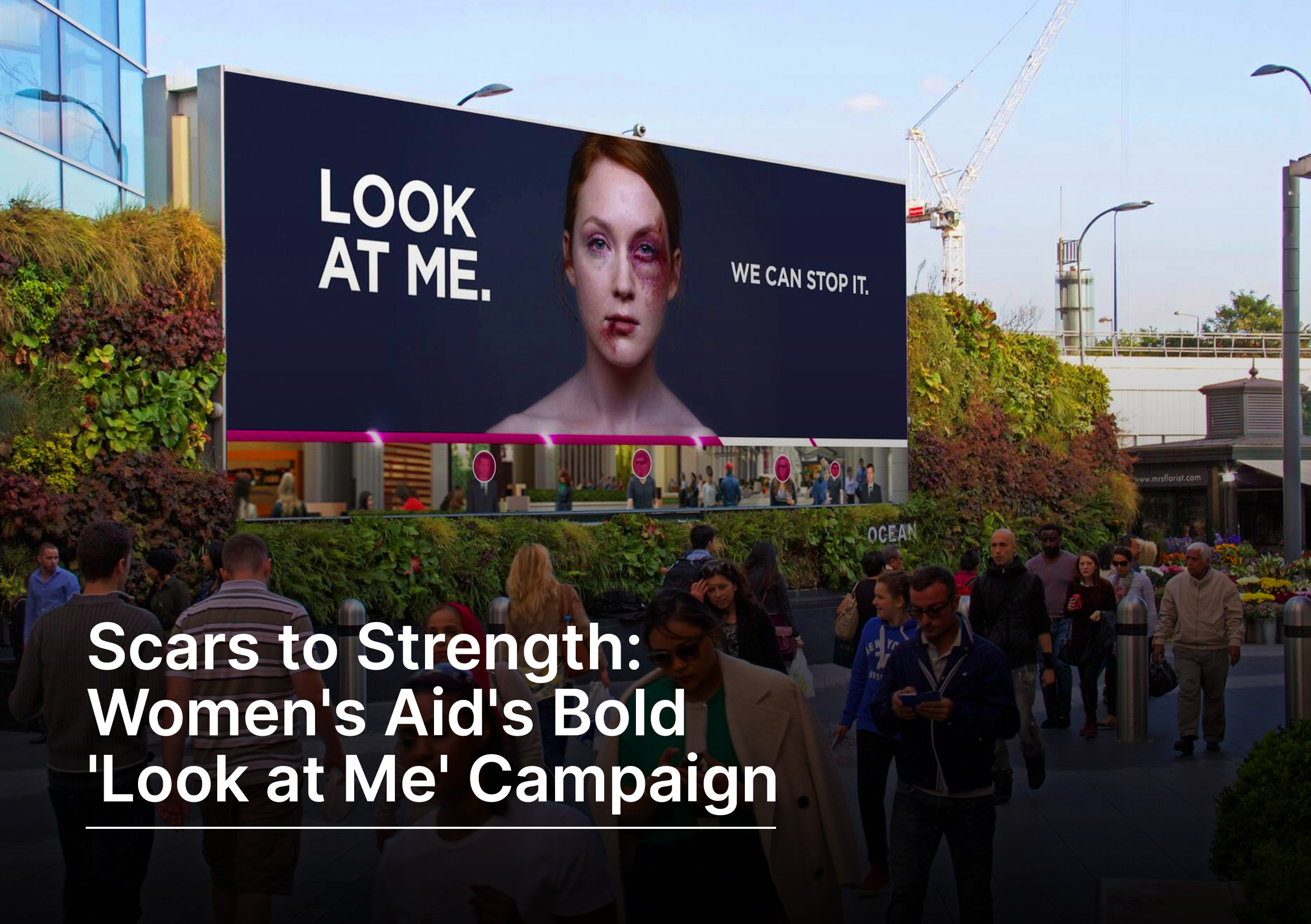Imagine walking down the street and coming face-to-face with a series of interactive billboard ads. Each one features the image of a woman, her face bearing the marks of wounds and blood. Feeling a little uneasy? Good, that’s the intention. After all, abuse isn’t meant to be a comfortable topic. Yet, to combat it effectively, we must confront the issue head-on, no matter how uncomfortable it may be. This is precisely the approach taken by the domestic abuse charity Women’s Aid with their ‘Look at me’ campaign.
Who is Women’s Aid
Before we jump into the campaign itself, let’s talk a bit about Women’s Aid. Women’s Aid is a leading organization dedicated to supporting victims of domestic violence and advocating for societal change. With a strong focus on empowering women and challenging harmful gender norms, Women’s Aid has been at the forefront of numerous campaigns aimed at raising awareness and providing support to those in need.
Overview of the “Look at Me” Campaign
Now that we know the amazing mind behind this bold campaign, buckle up because “Look at Me” isn’t your typical glossy ad with smiling models. Nope, it’s raw and real. Published in the UK in March 2015 the campaign featured photos of women with visible scars from domestic violence, paired with the bold tagline “Look at Me.” The message? These women aren’t hiding anymore; they’re demanding to be seen and heard. What’s cool about this campaign is how it flips the script on traditional portrayals of women. Instead of being victims, these women are survivors, and they own it. By using real survivors as models, the campaign challenges beauty standards and celebrates the strength it takes to overcome abuse as well as telling you to see them, look at them, and Look at me.
Mechanics of the campaign
Domestic violence will affect one in four women in their lifetime. Yet it so often goes unnoticed and unreported. This is a statistic one would say fueled the mechanics of the Look at Me campaign.
- Interactive Billboards:
The “Look at Me” campaign utilized interactive billboards strategically placed in public spaces. These billboards featured large-scale images of women’s faces, visibly marked with bruises and signs of abuse.
- Facial Recognition Technology:
One of the key mechanics of the campaign was the use of facial recognition technology embedded within the billboards. As individuals stopped to look at the images, sensors detected their presence and initiated the interactive experience.
- Real-Time Transformation:
As viewers gazed at the image, the facial recognition technology triggered a transformation in real-time. The bruises and marks on the woman’s face gradually faded away, leaving behind an unblemished visage. The transformation served as a powerful visual metaphor, symbolizing the potential for positive change when individuals actively engage with the issue of domestic violence. The message was clear: by acknowledging and confronting the problem, we can help survivors heal and break the cycle of abuse.
Impact and Effectiveness
So, did it work? You bet it did. The “Look at Me” campaign shook things up big time. It got people talking, and more importantly, it got them listening. Suddenly, domestic violence wasn’t something to sweep under the rug; it was out in the open, demanding attention. The campaign sparked a surge in awareness and even led to tangible changes in how society views and responds to domestic violence.
Critique and Challenges
Of course, no campaign is perfect. Some folks had concerns about triggering trauma among survivors or focusing too much on physical scars. But Women’s Aid didn’t just drop the ball there; they provided support and resources for anyone who needed it. It’s all about finding that balance between raising awareness and supporting those affected.
In all, beyond the buzz it created, “Look at Me” has had some serious ripple effects. It changed not just minds but also hearts. By sharing these stories, the campaign challenged stereotypes and fostered empathy. And it didn’t stop there; it inspired similar initiatives worldwide, showing just how powerful storytelling can be in driving social change.

